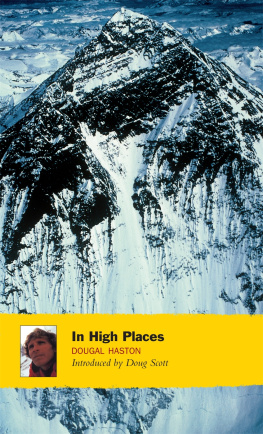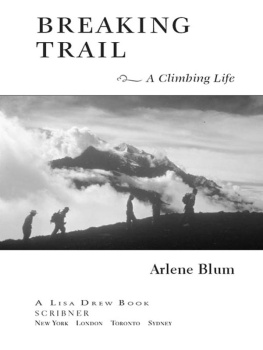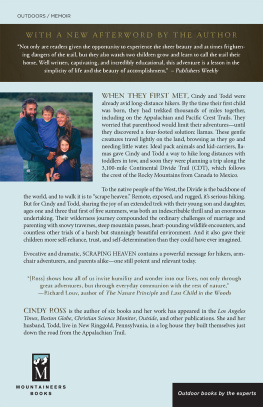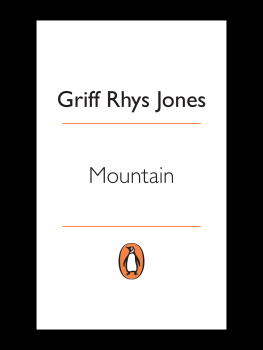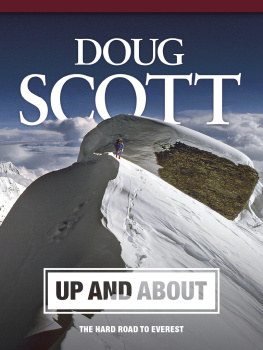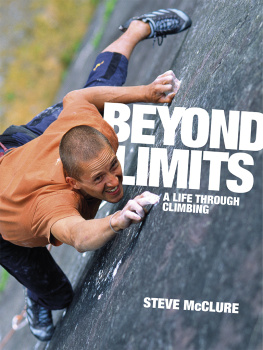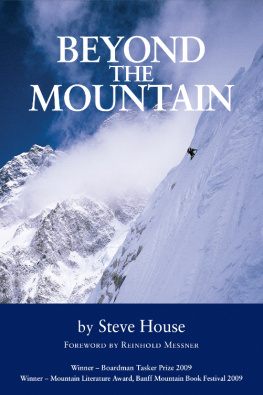Dougal Haston always brought the best out in the people who climbed with him; certainly it was always, for me, a very demanding and testing time. Once again and, as it turned out, for the last time, his determination and cool logic showed itself on the huge 7,000-foot South Face of Mount McKinley in April 1976 when a ferocious storm had us pinned down for two nights, and we were only 2,000 feet up the face. On the third morning, with spindrift blowing into our open bivouac and with 5,000 feet still to go, I shouted above the storm to Dougal, Well, what do you reckon about our chances?
That hard Scotsman looked me in the eye and asked, Well, have you got frostbite?
No, I replied.
He shrugged, letting me know that we go on until we do and hopefully get there before that happens.
It did not happen and after four more very cold and miserable bivouacs we climbed onto the summit, having made the first alpine-style ascent of a new route on the mountain. I have always remembered the Dougal Dictum that encapsulated the criteria Dougal applied to climbing in high places.
Dougal was born Duncan MacSporan Haston at Currie, Midlothian, Scotland in 1940. On the 17th January 1977 he died above the Swiss village of Leysin below a minor peak called Riondaz. With his death, Britain lost one of the finest mountaineers to have come from these Isles.
Dougals climbing was a classic concentric progression, first climbing locally with schoolboy friends and then ever-widening circles encompassing local crag, Highland winter gully and summer rock face. In 1959 he visited the Alps for the first time and during the next four years he climbed some of the great classics and the harder new routes in the Dolomites. His attention then turned to the Eiger North Face and after three attempts he made the second British ascent in 1963. This climb brought him national recognition and in 1966 he was acclaimed internationally for his central part in climbing the Eiger direct. The following year he consolidated his winter climbing with a bold winter ascent up the Matterhorn North Face, and all this before the drop pick ice axe had been invented. In 1968 he joined a strong British team that just failed to climb Cerro Torre in wild Patagonia.
On his first visit to the Himalaya in 1970 he succeeded in reaching the summit of Annapurna via the horrendous South Face. The following year he was back to try the South-west Face of Everest the highest of all the faces. He did not reach the summit but he did put in an incredible effort on that ill-fated international expedition. He came away with his reputation untarnished and, in fact, enhanced.
Dougal was back on Everest the following year on Chris Boningtons first expedition. It was unsuccessful in climbing the South-west Face but Dougal again was at the high point and I was with him on that occasion when we took the decision to abandon the attempt on the 14th of November. We had not only come too late but we also realised that we had gone the wrong way. We had to wait three years before Everest became available to us and, in the meantime, Dougal was making winter ascents in the Alps and was also on the first ascent of Changabang in the Garwhal Himal with Chris Bonington, Mark Boysen, Balwant Sandhu, Tashi Chewang and myself.
Chris again booked Everest, this time in the autumn of 1975. His planning was implemented to perfection and he had a very strong team that walked in a month earlier and that aimed to climb the left-hand gully of the rockband. This was achieved by Nick Estcourt and Paul Braithwaite. Dougal and I established Camp VI above the rockband and pushed out fixed rope across the upper snowfield on the first day. On the second the 24th September we reached the top of the face and climbed the final part of the original route to the summit of Everest. That night was spent in an unplanned bivouac by the south summit at 28,700 feet without sleeping bags and without oxygen. We survived without frostbite and managed to get ourselves down to the western coomb the following day. Those three days above the rockband were the finest days one could ever hope to have on a mountain. It was not only the place but the person I was with. I always felt privileged in Dougals company and certainly on the South-west Face of Everest it became obvious why. He was very much like a sherpa reticent, self-contained, economical in word and deed. He never wasted a step yet took every pitch that came his way; he never faltered. His physical and moral strength transmitted itself to me, giving me the confidence to concentrate on taking that next step in a place where every step gets more difficult.
The following spring Dougal and I made our way up the South Face of Mount McKinley. Dougal took the rest of the year off to write his novel, Calculated Risk. The irony of the ski-ing incident described in the book, when the hero Jack McDonald out-runs a powder snow avalanche on La Riondaz, is matched against the incident in real life in which Dougal perished. Only a few days after passing over his hand-written manuscript, he himself went out to ski the same couloir. The warnings were up not to ski above the town of Leysin that day as there was so much powder lying on the mountains. To ski down La Riondaz couloir in those conditions was something that Dougal had long planned to do. He was obviously aware of the dangers as he set off. He skied down the couloir but triggered off an avalanche which overwhelmed him. He was found the following day buried under a few feet of snow.
His historic climbing achievements only hint at the man himself. There are revelations of his character in this book, In High Places. It is succinctly written without superfluous padding, jarring like rap at times, taking the reader up his climbs ever longer, ever harder, ever higher. Along the way we have glimpses of his metaphysical development, as he passed from rebellion into a period of spiritual confusion until, finally, he was beginning to show an awareness and acceptance of what is. Although, having said that, he had an unusual if not paranoid obsession with armchair critics coming out of their holes to annoy him. Certainly, towards the end of his life and beyond the scope of this book, he did seem more tranquil; perhaps that was to do with the merciless passage of time as with all of us.
So, in this book, the reader will trace the development of the climber and the man, but mostly the climber. For although he climbs to find out more about himself he keeps most of his discoveries to himself and his life beyond climbing is hardly dealt with at all; the fact that he married is given one sentence. He was not sentimental but he was a climber and that is what this book is about.
The first two pages set the scene and develop a theme that runs through the book how he was able to bend his will to maintain upward progress through the most adverse conditions when he was fully convinced of the logic of the route. In fact, he never faltered, never backed down; took every pitch on a climb that came his way. He was helped in this by an ability to acclimatise quickly and with vast reserves of strength. He was a supreme athlete an aristocrat amongst the rest. He was, by nature, physically suited to climbing and he did have a strong competitive streak as is revealed in his early years when competing with Sassenachs for plumb climbs in Glencoe and on the Ben. His natural aptitude for climbing would have come to nought had he not served a very long and hard apprenticeship getting out of difficult situations successfully by the strength of our own ability in Scotland, the Dolomites and the Alps, which helped him accumulate a store of knowledge to survive situations on the great faces of Annapurna and Everest.
Doug Scott
March, 1997

